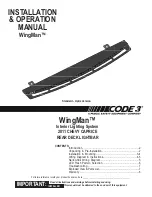
INTRODUCTION
PRELIMINAR STUDIES AND CONSIDERATIONS
MAINTENANCE AND DAMAGE PREVENTION
WORK ON BASIC VEHICLE
MOUNTING AND CONSTRUCTION
POWER TAKE-OFF
ELECTRIC AND ELECTRONIC SYSTEMS
APPENDIX
184
Body Builder Manual Part II, Specific Book LCV
V1.0, February 2015
5.4.10 Tail lift
General considerations
Tail lifts are available in various sizes and shapes, with different load capacities.
Therefore, before installing a tail lift it must be checked to see whether it is suitable
for the vehicle model, the chassis and the body, since the tail lift can influence the
weight distribution in the vehicle, the total length of the body, the flexion of the
chassis frame and the subframe.
Fig. 5-137 SPBGC54_026 Vehicle with tail lift
A tail lift can be mounted in a panel van as well as in a chassis cab. Before starting
the conversion work on the vehicle, it is recommended that the free space for
mounting should be verified, and a complete plan for proper installation of the tail
lift made.
The user of the vehicle is responsible for the security of the tail lift while it is being
used. It is therefore imperative for the Body Builder to provide clear instructions
about the function of the superstructure. These instructions must always be carried
inside the vehicle.
NOTICE
standard EN 1756-1:2001+A1:2008
Tail lifts - Platform lifts for mounting on
wheeled vehicles - Safety requirements - Part 1: Tail lifts for goods
should be
complied with
.
The regulations in force in each country must also be complied with.
NOTICE
The Body Builder is responsible for monitoring the safety and stability of the tail
lift. The vehicle‘s stability must be checked in every operating condition of the tail
lift, both during driving and during the tail lift performance.
















































